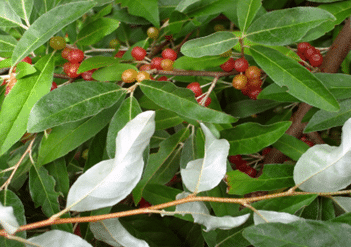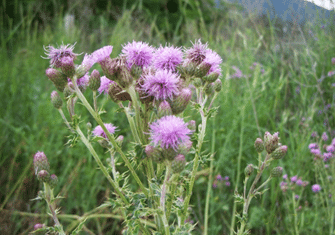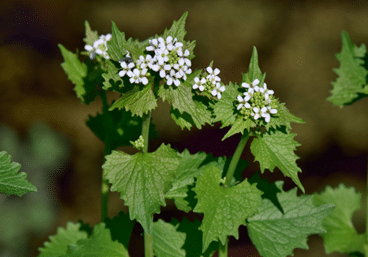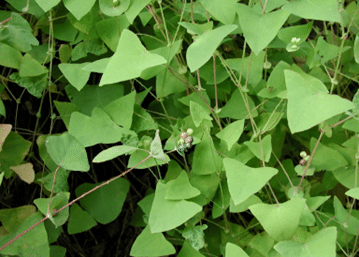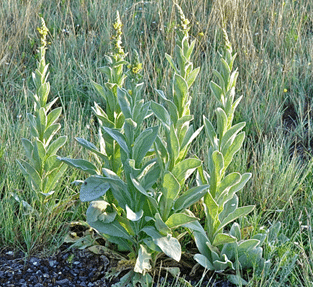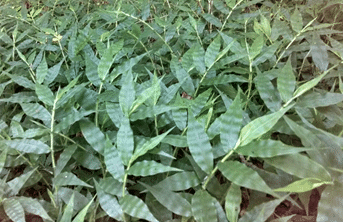Invasive species are defined as any non native organisms that are introduced to an area and begin to spread beyond the original site of introduction. This could include animals, plants, parasites, or even diseases. Invasive plant species typically share many of the same characteristics. They are able to quickly adapt to a wide variety of environmental conditions such as varying climates, soil composition, or sunlight exposure. They reproduce rapidly and in large quantities and can disperse very easily. Generally, they cause harm to property, wildlife, native plant populations, and humans.
They are able to spread in a variety of ways but most commonly by us! Unknowingly, we get their seeds on our boots and clothing, equipment like mowers and weed whackers, even on vehicles and boats. By going from one place to another, we are spreading the invasives without even knowing it. Many invasive plant species were introduced by accident, however some were brought to areas intentionally. For example, garlic mustard was brought to the US in the 1800s by European settlers for culinary and medicinal purposes. It got out of control and spread dramatically and is now found in many parts of the Midwest, Northwest, and Northeast United States. Invasive species are also introduced to areas through landscaping. There are many non native invasive plants that have beautiful foliage or produce colorful flowers that people want to incorporate in their landscaping. For example, Chinese wisteria yields breathtaking purple flowers that cascade beautifully over pergolas and decks. However, it is extremely aggressive, and the leaves, fruit, and seeds are toxic to humans and pets. It can also cause property damage by climbing underneath siding, onto roofs, gutters, and fences. Once it’s present in your yard, it’s almost impossible to eradicate.
So, why should you care about the spread of invasive species?
The expansion of invasive species has negative rippling effects on the environment. When invasive plants take over an area, the native plants can’t compete and are eliminated. Native plants have strong and deep root systems, which help to keep the surrounding soil in place. Invasive species generally have more shallow/weak root systems, and because of the sheer quantity of invasive plants in an area, they degrade the soil of nutrients which leads to erosion and washout. Erosion can result in a decrease in the quality of our drinking water. The transmission of invasive species also negatively impacts fisheries, and agricultural & forestry industries. The spread limits land use, degrades natural resources, alters water resources, and is very costly to control. There is an overall reduction in biodiversity which affects everyone. Loss in biodiversity will lead to extinctions, food insecurities, lack of clean drinking water, and higher vulnerability to pests and diseases. Which is why it’s so important to educate yourself and others about the dangers of invasive plant species. Although sometimes it feels like an impossible task to control invasive plant populations, doing what you can is always better than ignoring the problem. If everyone does their part, it can truly make a huge difference.
Part of our job on the land stewardship team is managing invasive species. There are priority areas in each village that the team focuses on treating year after year. Certain invasive species are treated using mechanical methods. For example, garlic mustard, mullein, and mile-a-minute are pulled by hand, bagged, and baked in the sun before composting. Priority meadows that consist almost entirely of invasives are brush hogged and seeded with native grass mix. Other invasives require the use of herbicide, for multiple reasons but a big one being practicality. Invasive species will carpet an entire forest floor or an entire meadow, and some species do not respond well to being pulled or cut. They will keep sprouting back and require constant revisiting just to slow down their spread. Not to mention the land stewardship team is only five people managing over 2,000 acres! The members of the team that do spray herbicide are trained, licensed, and use best practices to make sure the herbicide is handled safely, correctly, and according to the label.
So, what can you do to prevent the spread of invasive species?
Consider volunteering with the land stewardship team or other organizations to contribute to the fight against invasive species! Join us on one of our volunteer days to pull and bag invasives. Also, do your research before planting trees or plants in your yard, once an invasive plant is established it can be very difficult if not impossible to fully eradicate. Always check your clothes, shoes, and pets for seeds after a hike. Be sure to clean everything thoroughly to prevent unintentional spread before leaving the area. Educate your family and neighbors about the dangers of invasive plants and spread the word about volunteer opportunities. It’s a great idea for teens who need community service hours or as a way to connect with your community!
More resources to learn about invasive species:
What is an invasive species and why are they a problem? | U.S. Geological Survey (usgs.gov)
Invasive Species (nationalgeographic.org)
Invasive Species | National Wildlife Federation (nwf.org)
What Are Invasive Species and Why Should I Care? | Purdue Extension Forestry & Natural Resources
Take Action Against Invasive Species | National Invasive Species Information Center
Garlic Mustard: Invasive, Destructive, Edible (nature.org)
Wisteria: Pretty or Pretty Harmful? – Mississippi Forestry Commission (ms.gov)

